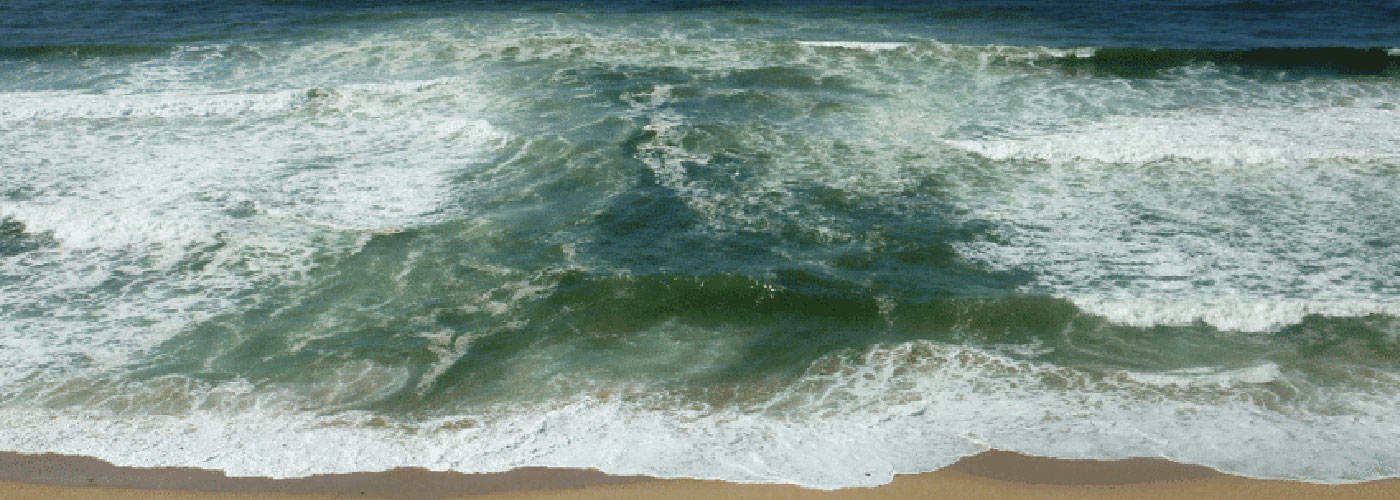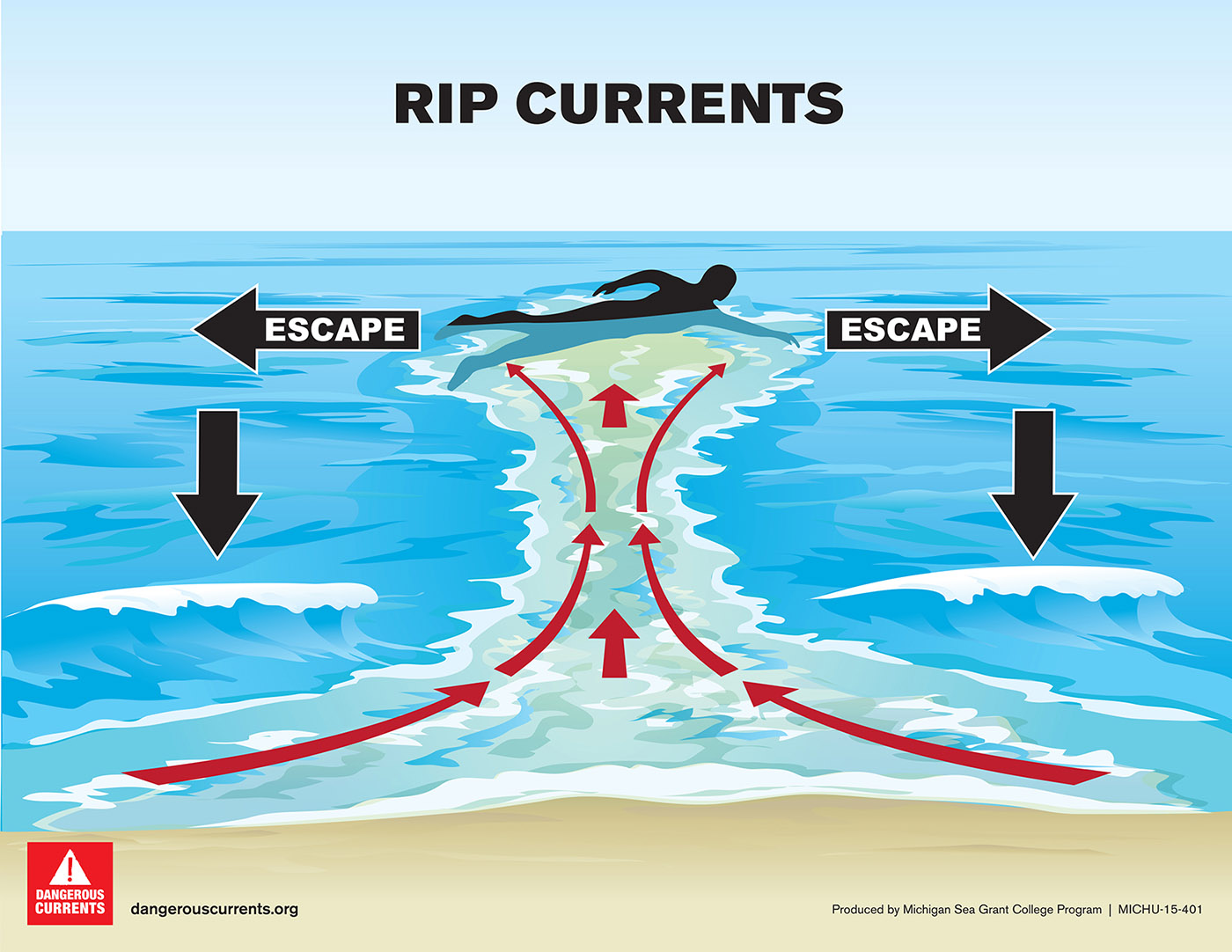 Rip currents (sometimes inaccurately described as rip tides or undertow) are narrow but powerful currents of water flowing (ripping) swiftly away from shore. Rip currents vary in size and speed can occur at any beach with breaking waves. Rip currents will not pull a swimmer under, but will carry them out to deep water.
Rip currents (sometimes inaccurately described as rip tides or undertow) are narrow but powerful currents of water flowing (ripping) swiftly away from shore. Rip currents vary in size and speed can occur at any beach with breaking waves. Rip currents will not pull a swimmer under, but will carry them out to deep water.
Learn to Identify Rip Currents
When arriving at a beach, take a few minutes to observe the surf and look for rip currents. A rip is often an area where there is a break in the incoming wave pattern. The water is often darker than the surrounding surf and is flowing outward. Teach your children and others how to identify and avoid rip currents.
If you are caught in a rip current, follow these safety tips:
DON'T PANIC. Stay calm. A rip curent won't pull you under - it'll just pull you away from shore. If you try to fight the rip current and swim against it, you'll just get worn out. Instead float or tread water.
If you are a good swimmer, swim parallel to shore until you've cleared the pull of the rip current, then swim in with the waves, allowing them to push you to shore.
If you can, wave and yell to get the attention of lifeguards and people on shore to let them know you need help.
If you see someone in trouble, get help from a lifeguard. If a lifeguard is not available, have someone call 9-1-1. Throw the victim something that floats and yell instructions on how to escape. Remember, many people drown while trying to save someone else from a rip current.
|
Swimming Through A Rip Current |
Sources
Michigan Sea Grant http://www.miseagrant.umich.edu
The National Ocean Service (NOAA) https://oceanservice.noaa.gov/facts/ripcurrent.html

























